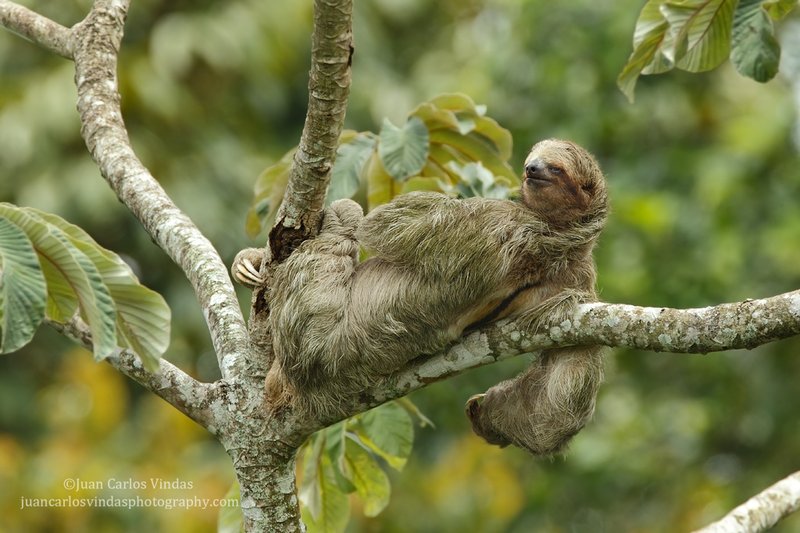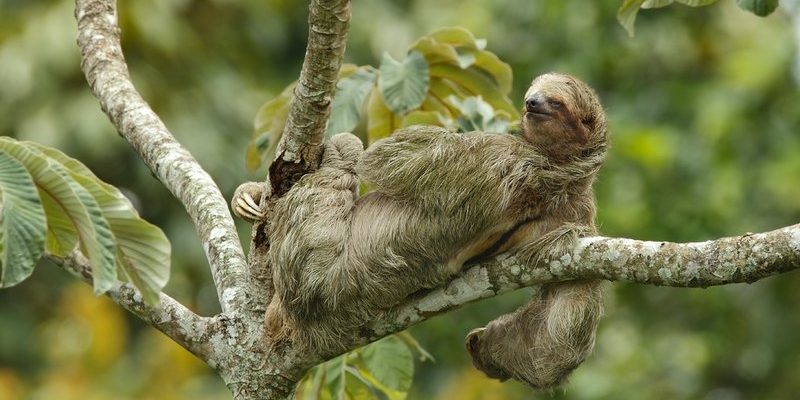
Three-toed sloths are not just adorable; they play an important role in their ecosystems. They thrive in habitats that offer plenty of leaves to munch on and high branches for lounging. If you’ve ever wondered about their specific homes or how they fit into their surroundings, you’re in for a treat. So, grab a cup of coffee, sit back, and let’s unwind together over the fascinating lives of these slow-moving mammals.
Three-Toed Sloths: A Quick Overview
Before we dive into their habitat specifics, let’s take a moment to appreciate what makes three-toed sloths special. These creatures are, as their name suggests, equipped with three long, curved toes on each foot, which give them a grip on tree branches. This is no accident; their physical traits are designed for their leafy homes. They are excellent climbers, spending most of their lives hanging upside down in treetops, which helps them avoid predators on the jungle floor.
Interestingly, there are several species of three-toed sloths, the most common being the brown-throated sloth and the Pale-throated sloth. Each species has its own slightly different habitat preferences, but they all share the same slow-paced lifestyle. Are you curious about where exactly these sloths stretch their limbs? Let’s break down their habitat!
The Primary Habitat of Three-Toed Sloths
Three-toed sloths primarily inhabit tropical rainforests and cloud forests. These lush environments provide a constant supply of food, mainly leaves from various tree species. The sloths are herbivores, so their diet consists mainly of tender leaves, fruits, and flowers. But beyond just food, the dense foliage offers excellent cover from predators like jaguars and harpy eagles.
The trees they prefer are not just any trees. Sloths often choose broadleaf evergreen trees, which have plenty of leaves and branches for them to cling to. They seem to have a preference for ceiba and fig trees, which can often be found in their range. Here’s the thing: these trees also help sloths maintain a low energy lifestyle. They move slowly, conserving energy, which works in perfect harmony with their leafy diet.
Regional Distribution of Sloths
You might be wondering: where exactly can you find three-toed sloths? Their range stretches from southern Mexico all the way down to northern Argentina. This vast area includes several countries, such as Guatemala, Honduras, Nicaragua, and Colombia.
In these regions, sloths adapt to different environmental conditions. For example, in cloud forests, where the weather is more humid and cooler, sloths can thrive as they navigate the misty treetops. Meanwhile, in the lowland rainforests, they find a buffet of diverse plant life. This flexibility in habitat choice is key to their survival, allowing them to thrive even as conditions change.
The Importance of Habitat Conservation
Now that we know where three-toed sloths live, let’s talk about why their habitat matters. Deforestation poses a huge threat to sloths and their rainforest homes. Trees are cut down for agriculture, logging, and development, which disrupts their ecosystem and food sources. When these forests shrink, sloths face the difficult choice of moving to less suitable areas, which can compromise their health and safety.
Conservation efforts are vital to protecting sloth habitats. Organizations work tirelessly to promote sustainable forestry practices and preserve large areas of rainforest. By supporting these initiatives, we can help ensure that three-toed sloths continue to thrive in their natural homes, maintaining the health of their ecosystems.
Challenges of Living in a Canopy
Living high in the trees might sound idyllic, but it does come with its own set of challenges. One significant issue is their slow movement, which, while it helps them conserve energy, also makes them vulnerable to predators. Being sluggish means they can’t dart away quickly if a threat appears.
Additionally, these habitats are under constant threat from human activity. Whether it’s climate change affecting rainfall patterns or encroachment from urban areas, three-toed sloths must navigate a changing world. This vulnerability highlights the need for awareness and action to protect their habitat.
Fascinating Symbiotic Relationships
One of the coolest things about sloths is their unique relationships with other species. You might not know that sloths often carry algae on their fur, which provides a greenish tint to their coat. This algae is not just a fashion statement; it provides camouflage in the leafy canopy, helping sloths blend into their environment.
But that’s not all! The algae also serve as a food source for certain insects, which in turn attract birds that help keep the ecosystem balanced. This mutual relationship creates a mini-ecosystem within the sloth’s fur. Isn’t that just wild? It’s like a tiny rainforest living on a bigger rainforest creature!
How Climate Affects Sloth Habitats
Climate plays a significant role in determining where three-toed sloths can live. They thrive in warm, humid conditions typical of tropical rainforests. However, changes in climate can affect these habitats significantly.
For instance, increased temperatures and unpredictable rainfall can lead to droughts. Such conditions might reduce the availability of food. Sloths, being highly specialized feeders, could struggle if their leafy meals become scarce. This emphasizes the need for ongoing climate research and conservation efforts to maintain their ecosystems.
Final Thoughts on the Three-Toed Sloth’s Home
So, where do three-toed sloths live? They call the lush rainforests of Central and South America home, relishing the peace and abundance of their leafy canopies. As we’ve explored, these habitats are not just homes; they’re intricately tied to the sloths’ survival and well-being.
Understanding their habitat and the challenges they face is essential for their conservation. The next time you see a sloth, think about its home and the rich ecosystem it supports. By caring for these environments, we ensure future generations can delight in the charm of three-toed sloths. So, let’s keep working towards a world where these fantastic creatures can live slowly and peacefully among the trees!

